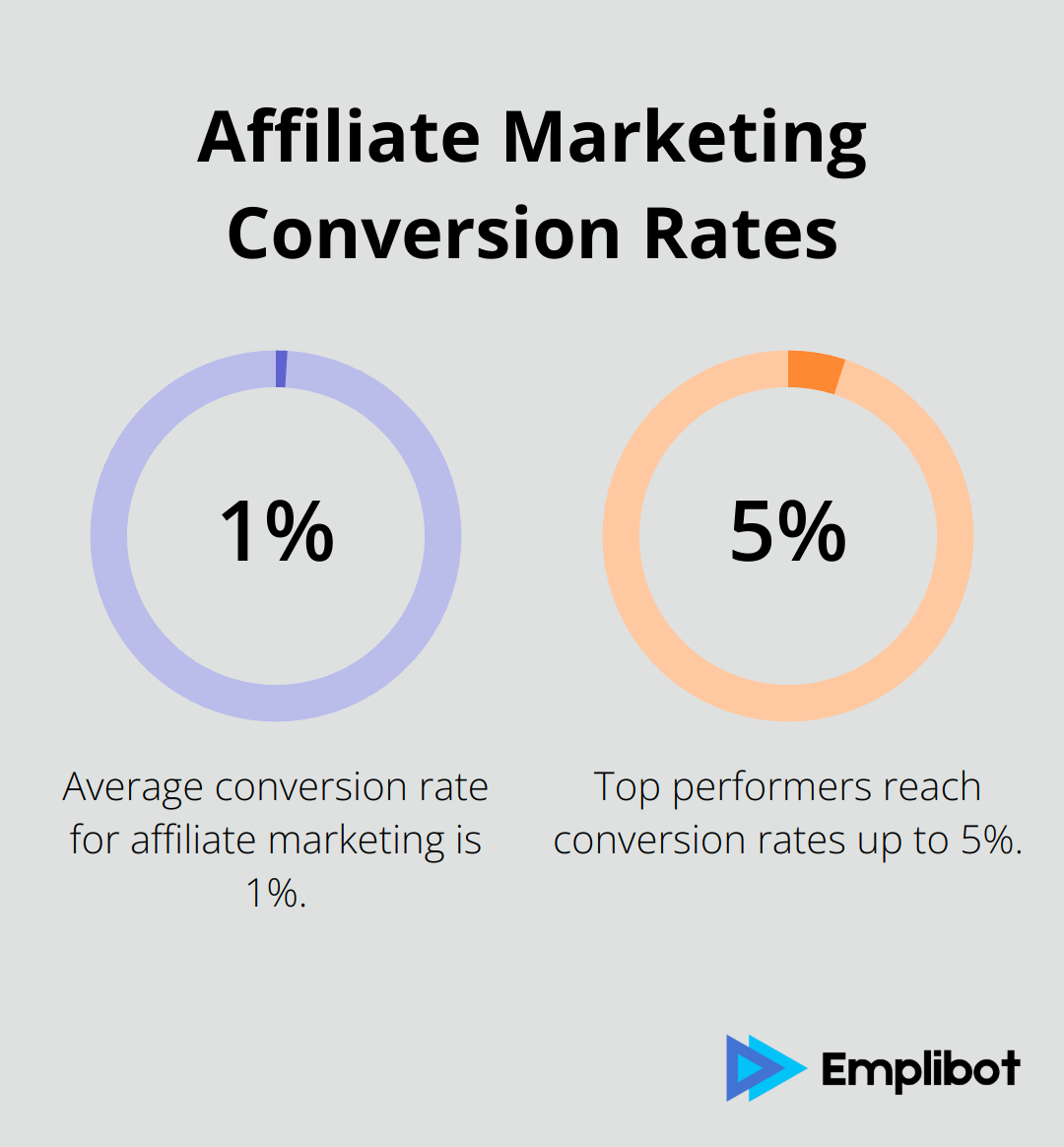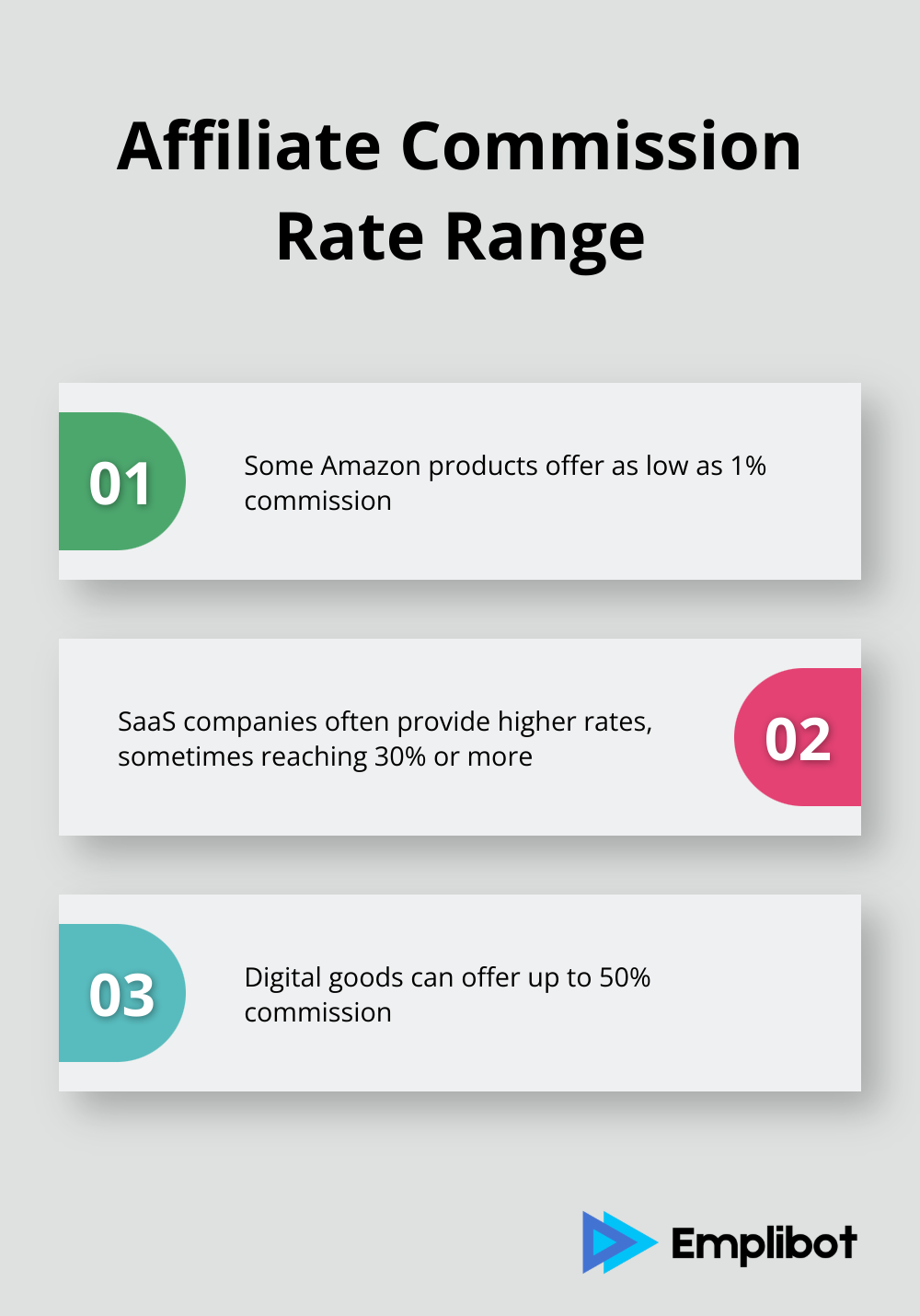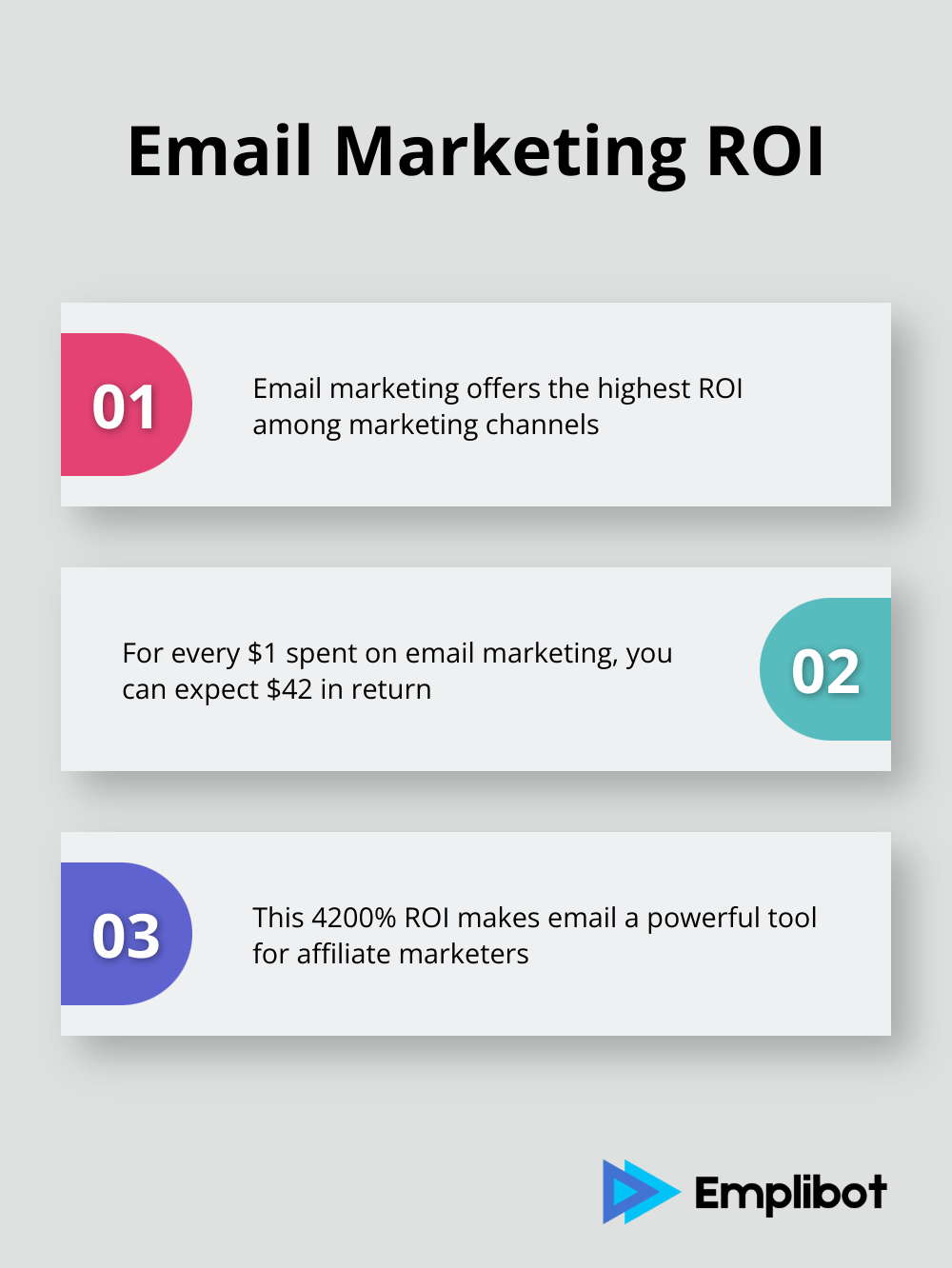Affiliate marketing has become a powerful way for content creators to monetize their platforms. At Emplibot, we’ve seen countless success stories of individuals partnering with brands to generate income.
But what does it mean to affiliate with a brand, and how can you get started? This guide will walk you through the essentials of affiliate marketing, from choosing the right partners to implementing effective strategies for success.
What Is Affiliate Marketing?
The Basics of Affiliate Marketing
Affiliate marketing represents a performance-based strategy where businesses reward individuals or companies for driving traffic or sales to their products or services. It forms a partnership between brands and content creators, bloggers, or influencers who promote products to their audience.
The Mechanics of Affiliate Marketing
The process operates on a simple principle. An affiliate joins a brand’s program and receives a unique link or code. When someone clicks on this link and completes a purchase, the affiliate earns a commission. A study by Awin reveals that the average conversion rate for affiliate marketing stands at 1%, with top performers reaching up to 5%.

Advantages for Affiliates
Content creators find affiliate marketing an attractive option to monetize their platform without creating their own products. It offers a low-risk entry into entrepreneurship. 80% of brands run an affiliate marketing program, indicating a wealth of opportunities across various niches.
Benefits for Brands
Brands enjoy increased exposure and sales without the upfront costs associated with traditional advertising. They pay only when results materialize, making it a cost-effective marketing channel. Statista projects the affiliate marketing industry to reach $8.2 billion by 2022, underscoring its growing significance in digital marketing strategies.
Selecting the Right Programs
Affiliate programs vary significantly in their offerings. Commission rates range from 1% for some Amazon products to 50% for digital goods. We recommend programs that align with your audience’s interests and offer competitive commissions. SaaS companies often provide higher rates (sometimes reaching 30% or more of the subscription value).

The Importance of Trust
Trust forms the foundation of successful affiliate marketing. Authentic recommendations resonate strongly with audiences. A Nielsen study found that 92% of consumers trust recommendations from people they know (even online acquaintances). This trust translates into higher conversion rates and increased revenue for both affiliates and brands.
As you explore the world of affiliate marketing, you’ll need to identify the right brands to partner with. Let’s examine how to choose the perfect affiliates for your business in the next section.
Finding Your Perfect Brand Partners
Research Potential Brands
Start your journey by creating a list of potential brands in your niche. Affiliate networks like ShareASale or CJ Affiliate offer a wealth of options. Visit the brands’ websites and social media profiles to assess their online presence and follower engagement. Look for companies with dedicated affiliate pages or resources, as these often provide better support and tools for success.
Evaluate Brand Reputation and Product Quality
The products you promote will reflect on your own brand. Thoroughly evaluate the quality of a brand’s offerings by reading customer reviews on independent platforms like Trustpilot or Consumer Reports. These sites offer unbiased feedback from real users. Focus on brands with an average rating of at least 4 out of 5 stars. Pay attention to how companies handle negative feedback-responsive and solution-oriented brands are more likely to value their affiliates as well.
Analyze Commission Structures and Payment Terms
Commission rates and payment terms vary widely across affiliate programs. While some offer rates as low as 1% for certain categories, others (particularly digital product creators) may offer up to 50% commission. Don’t just focus on the percentage-consider the average order value (AOV) and earnings per click (EPC). A lower commission rate on a high-priced item might outperform a higher rate on cheaper products. (For example, a 5% commission on a $500 product yields $25, beating a 20% commission on a $50 item at $10.)
Check Cookie Duration
The cookie duration can significantly impact your earnings. Longer cookie lifespans increase your chances of earning commissions. Some programs offer 24-hour cookies, while others extend up to 90 days or more. Try to partner with brands that offer longer cookie durations to maximize your earning potential.
Ensure Audience Alignment
The most lucrative affiliate partnership won’t succeed if the products don’t resonate with your audience. Analyze your audience demographics, interests, and pain points. Choose brands that offer solutions to their problems or enhance their lives. For instance, if your audience consists mainly of busy professionals, promoting time-saving gadgets or productivity tools would likely perform well.
Now that you’ve identified potential brand partners, it’s time to explore strategies for successful brand affiliation. The next section will guide you through building a strong online presence and creating valuable content to maximize your affiliate marketing efforts.
How to Maximize Your Affiliate Success
Craft Compelling Content
The foundation of successful affiliate marketing rests on creating valuable, engaging content that resonates with your audience. You should produce in-depth product reviews, comparison articles, and how-to guides that showcase the benefits of the products you promote. A detailed review of a high-end camera might include sample photos, video footage, and a breakdown of key features, helping potential buyers make informed decisions.
A study by Content Marketing Institute reveals that 72% of marketers say content marketing increases engagement and leads. You should try a mix of formats to cater to different preferences. This could include blog posts, videos, infographics, and podcasts. Always disclose your affiliate relationships transparently to maintain trust with your audience.
Harness the Power of Social Media
Social media platforms offer numerous opportunities for affiliate marketers. Each platform has its unique strengths, so tailor your approach accordingly. On Instagram, you might use Stories to showcase products in action, while Pinterest could serve as an ideal platform for creating boards with affiliate product recommendations.
A report by Awin shows that 67% of affiliates use social media to drive traffic to their offers. To maximize your impact, focus on building genuine relationships with your followers. Engage in conversations, respond to comments, and share valuable insights beyond just promotional content. This approach helps build trust and can lead to higher conversion rates for your affiliate links.
Leverage Email Marketing
Email marketing remains a powerhouse for affiliate marketers, despite the rise of social media. Email marketing promises to deliver the highest ROI of all marketing channels-$42 back for every dollar you spend. Build your email list by offering valuable lead magnets related to your niche (such as ebooks, checklists, or exclusive content).

After building a subscriber base, segment your list based on interests and behaviors. This allows you to send targeted affiliate promotions that will likely resonate with each group. For instance, if you operate in the fitness niche, you might have separate segments for weight loss, muscle building, and general health, allowing you to promote relevant products to each group.
Optimize for Search Engines
SEO plays a vital role in driving organic traffic to your affiliate content. Affiliates should focus on keyword research, quality content creation, and link building to attract relevant traffic and convert visitors into customers. Tools like Ahrefs or SEMrush can help you find high-volume, low-competition keywords related to the products you promote.
Incorporate these keywords naturally into your content, including in titles, headings, and throughout the body text. Pay attention to on-page SEO factors like meta descriptions, image alt text, and internal linking. A study by BrightEdge found that organic search drives 53% of all website traffic, highlighting the importance of a solid SEO strategy.
Final Thoughts
Success in affiliate marketing demands a strategic approach and unwavering commitment. You must understand the fundamentals, select brand partners carefully, and implement effective promotion strategies to create a thriving affiliate business. The key to long-term success lies in building authentic relationships with your audience and maintaining trust through transparency.
The affiliate marketing landscape offers immense opportunities for those willing to put in the effort. With the right mindset and tools, you can turn your passion into a profitable venture. Consider leveraging platforms like Emplibot to streamline your content creation and distribution processes, allowing you to focus on building meaningful connections.
The world of affiliate marketing evolves constantly, so stay curious and keep learning. Your ability to provide value to both your audience and brand partners will become the cornerstone of your success. Take that first step now: research potential brand partners, create compelling content, and start building your affiliate network (with meaning and purpose).

